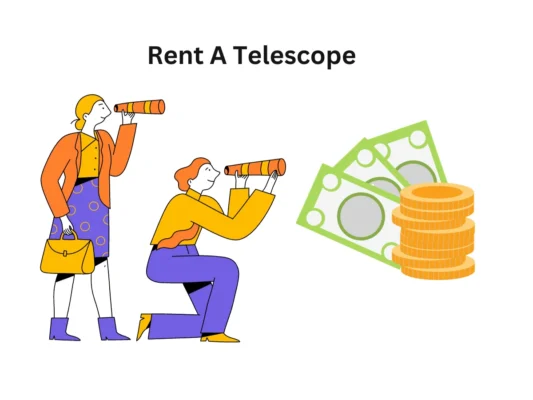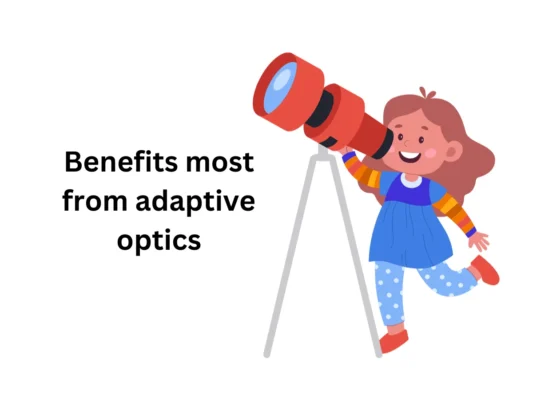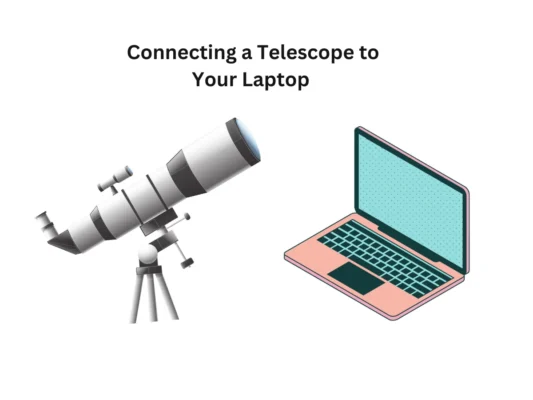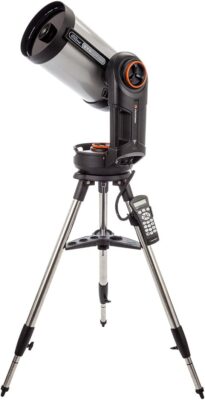Astrophotography is a hobby that has been growing in popularity over the past few years. With this meteoric rise of interest, there are more and more telescopes to choose from for best results. It can be challenging when you’re just starting with astrophotography to know which telescope will best suit your needs, but luckily you’ve come to the right place! We’ll take you through some of the Best Telescope for Astrophotography available on the market today so that you can find one that fits your needs perfectly.
15 of The Best Telescope for Astrophotography
Astrophotography is a popular hobby and area of study where you use telescopes to view deep space objects. Since it can be difficult to know which would be the best telescope for astrophotography according to your needs and budget , we’ve compiled this list of the top 15 Best Telescope for Astrophotography. Inside you’ll find information on our picks as well as what they’re good at and how much they cost.
[affiliatable id=’147249′]Celestron AstroMaster 130EQ
For the experienced stargazer, we recommend a Celestron AstroMaster 130EQ. This telescope comes with everything you’ll need for serious amateur astrophotography and great performance in both amateurs’ hands as well as more advanced users looking to branch out on their hobbies into something different.
Specs:
- Brand: Celestron
- Model: Astromaster 130EQ
- Objective lens diameter: 130 mm
- Mount: Equatorial Mount
- Weight: 37 lb
- Focal Length: 150 mm
- Large Aperture.
- The equatorial mount is motor-driven.
- Increase your exposure time.
- Capture the faintest objects in space.
- Takes time to set up.
Celestron Nexstar 5SE
The Celestron NexStar 5SE can be a great choice for those who are not just starting out in observing, but also want to try their hand at astrophotography. This telescope has many features that will make all your astronomical pursuits easier than ever before.
Specs:
- Brand: Celestron
- Model: Nexstar 5SE
- Objective lens diameter: 125 mm
- Focus Type: Auto Focus
- Weight: 17.6 lb
- Focal Length: 1250mm
- The design is user-friendly.
- Its aperture shows plenty of detail.
- Its GoTo track system aligns easily.
- Long exposure astrophotography is not suited.
Sky-Watcher Skymax 127mm
This telescope is a great choice for those who want to take pictures of the Moon, rings of Saturn, or the great red spot on Jupiter. It has a long focal length (1500mm) which means it can see faraway objects clearly without much distortion due to being focused on them at close range too. The Sky-Watcher 127 will make astrophotography easier than ever before with its large aperture lens system.
Specs:
- Brand: Skywatcher
- Model: Sky-Watcher Maksutov-Cassegrain 127mm
- Objective lens diameter: 127 mm
- Mount: Equatorial mount
- Eyepiece lens type: Barlow
- Focal Length: 1500 mm
- Weight: 10 lb
- Capture professional-looking shots with this mount.
- Achieve stability and balance when shooting.
- it has a long focal length.
- Not the best choice for longer exposure to astrophotography.
Celestron Inspire 100AZ
The Celestron Inspire 100AZ is the perfect beginner’s telescope. It comes with a 10mm eyepiece and 20 mm one, as well as all other necessary accessories for you to explore outer space without spending too much money. Starry Night Software will provide you with everything needed to start exploring space right away. It also has a red LED flashlight so that night vision won’t be an issue when looking at those faraway stars or galaxies – not forgetting about its star diagonal pointing device which helps align your sights accurately on any object you want finder first time around.
Specs:
- Brand: Celestron
- Model: Inspire 100AZ Refractor
- Objective lens diameter: 100 mm
- Mount: Altazimuth Mount
- Lens coating: Fully coated
- Focal Length: 660 mm
- Weight: 20 Pounds
- Easy to use.
- Low Cost.
- Can use your phone to take photos.
- Great for kids.
- Diagonal primarily designed only for terrestrial use, update likely needed for astronomical observations.
Sky-Watcher Skymax 180mm Maksutov-Cassegrain
The Sky-Watcher SkyMax-180 PRO features a long focal length, which makes it ideal for those who like to image the members of our solar system. Its Maksutov-Cassegrain design offers excellent views of cratered lunar surfaces and Jupiter’s atmospheric bands/belts with spectacular dust storms raging across Mars’ face from afar all while enabling astrophotographers to pick out Saturn’s rings’ Cassini Division in relative detail.
Specs:
- Brand: Sky-Watcher
- Model: Sky-Watcher Maksutov-Cassegrain 180mm
- Objective lens diameter: 180 mm
- Mount: Not included
- Lens type: Barlow
- Focal Length: 2700 mm
- Weight: 19 lb
- Sharp focus is excellent.
- Color fringing is minimum.
- Captures top-of-the-range images.
- Expensive.
Vaonis stellina observation station and hybrid telescope
The Vaonis Stellina Observation Station and Hybrid Telescope are quite unlike any other telescope you may have come across. Conventionally, these instruments make use of a finder scope or eyepieces – the futuristic design does not need for them with all its optical prowess packed inside.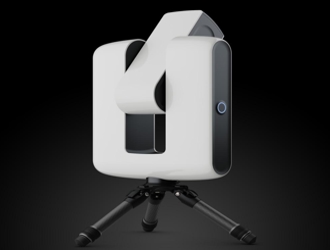
Specs:
- Brand: Vaonis
- Model: Vaonis Stellina Observation Station and Hybrid Telescope
- Objective lens diameter: 80 mm
- Mount: Motorized goto alt-az
- Focal Length: 400 mm
- Weight: 39 lb
- Automatic adaptation to weather conditions.
- No need to purchase eyepieces, filters and finders copes.
- Portable.
- Connect to multiple phones and tablets.
- Very Expensive.
Sky-Watcher EvoStar 80mm APO Doublet Refractor
The EvoStar 80mm APO refracting telescope is a great choice for those looking to take their deep-sky imaging skills up another notch. With an optimized design and high-quality optics, this scope will provide crisp clear images that are perfect for any level astrophotographer.
Specs:
- Brand: Sky-Watcher
- Model: S11100
- Objective lens diameter: 80 mm
- Lens Coating Description: Metallic high-transmission lens coatings
- Focal Length: 600 mm
- Weight: 7.3 lb
- The best telescope for amateurs and professionals alike.
- Superb image quality.
- Lightweight and durable body.
- Mount and tripod are purchased separately.
Orion 9534 ED80T CF Triplet Apochromatic Refractor Telescope
With a triplet 80mm apochromatic refractor from Orion, you can get professional-quality images. The 3 elements in this objective lens are precision matched to minimize light dispersion for maximum sharpness and true colors when taking shots of stars under long exposure times.
Specs:
- Brand: Orion
- Model: ED80T CF
- Objective lens diameter: 80 mm
- Lens Coating Description: Fully multicoated
- Focal Length: 480 mm
- Weight: 10.4 lb
- Mount: No mount
- Great optics.
- Lightweight yet strong build.
- Good Focuser.
- Not for high magnification.
- Eyepieces and diagonals purchased separately.
Sky-Watcher EvoStar 72 APO Doublet Refractor
The 72mm doublet APO is a great way to get started with astrophotography if you’re on a budget. This telescope provides high-quality images and it’s an excellent choice for beginners because its price tag won’t break your bank account – all while not sacrificing too much image quality.
Specs:
- Brand: Sky-Watcher
- Model: EvoStar 72ED
- Objective lens diameter: 72 mm
- Focal Length: 420 mm
- Weight: 4.3 lb
- Mount: No mount
- Fantastic optics for such a low budget.
- Great for astrophotography especially.
- Wild field of view.
- Great for deep-sky imaging.
- No eyepieces or diagonals included.
- 142x is the highest magnification it can reach.
Orion 8297 8-inch f/3.9 Newtonian Astrograph Reflector Telescope
The Orion 8297 reflector-based Astrograph offers a more affordable price point that can’t be beaten for those who want to get into astrophotography. This observatory features an f3.9 focal ratio and a large aperture of 203mm, which makes it perfect for capturing detailed images from both celestial bodies as well as phenomena such as nebulas within our solar system! With its enhanced aluminum coatings with 94% specular reflection (which is excellent), plus black interior & dual-speed focuser – all contributing factors in producing amazing views/images.
- Brand: Orion
- Model: Orion 8297 8-inch f/3.9 Newtonian astrograph
- Objective lens diameter: 203 mm
- Focal Length: 800mm
- Weight: 17.4 lb
- Mount: No mount
- Lens Coating Description: Enhanced Aluminum & Silicon Dioxide
- Captures excellent viewing images.
- Enhanced Reflectivity.
- Maximum image contrast.
- Difficult to use for beginners.
- Portability is limited.
Explore Scientific ED80 Essential Edition
When you need an ultra-affordable triplet APO for your astrophotography, the ED80 Essential Edition is a great way to maximize value on a budget. It features an 80mm focal length and nearly perfect color accuracy that makes its images sharp enough to capture details like nebulas or galaxy clusters in crisp definition.
- Brand: Explore Scientific
- Model: ES-ED0806-01
- Objective lens diameter: 80 mm
- Focal Length: 480mm
- Weight: 10.5 lb
- Mount: No mount
- Lens Coating Description: Multi-Coated
- Affordable triplet APO refractor.
- Good for long exposure imaging.
- Light-weight and portable.
- Mount and tripod need to be purchased separately.
- Accessories needed separately.
Explore Scientific Carbon Fiber ED102 f/7 APO Triplet with Hoya FCD100 Optics
The best apochromatic telescope for astrophotography is the Explore Scientific ED80. This big brother to our previous pick, The Pickering 8″ APO Triplet Refractor Telescope delivers amazing optical performance with its air-spaced triplets and 102mm aperture lens. If you can afford it spend more on your next purchase, this model will be worth every penny spent as the results are breathtaking.
Specs:
- Brand: Explore Scientific
- Model: FCD100-127075-CF
- Objective lens diameter: 102 mm
- Focal Length: 714 mm
- Weight: 7 lb
- Mount: Vixen Style
- High-quality optics.
- Great for astrophotography and astronomy due to its aperture size.
- Light-weight yet strong build.
- All of the accessories are sold separately.
Celestron Advanced VX 6″ Schmidt-Cassegrain Telescope
A beginner’s telescope is the perfect choice for those who want to start astrophotography. This bundle includes a Celestron Advanced VX computerized equatorial mount and 6″ Schmidt-Cassegrain (compound catadioptric) lens which will provide long exposure imaging as well as great visual observing capabilities in one package.
- Brand: Celestron
- Model: 12079
- Lens diameter: 150 mm
- Focal length: 1500 mm
- Weight: 47 lb
- Mount: StarBright XLT
- Great for beginner.
- Produces sharp images.
- Portable.
- One eyepiece included only.
Sky-Watcher Classic 150P Dobsonian 6-inch Aperture Telescope
The Sky-Watcher Classic 150P is a great choice for beginners looking to get started with telescope viewing. It can also be used in single or short exposure astrophotography, making it perfect either way. The Dobsonian design makes this product easy enough even if you’ve never handled one before so there are no worries about handling equipment that may not feel right just yet – all functions have been simplified by software updates over time which means anyone should find themselves at home within seconds after opening up their package. You can also attach cameras or smartphones for great shots of planets.
Specs:
- Brand: Sky-Watcher
- Model: Sky-Watcher Traditional Dobsonian 6″
- Objective lens diameter: 152mm
- Focal Length: 1200 mm
- Weight: 33 lb
- Mount: Alt-alt-mount
- Lens Coating Description: Fully multi-coated pyrex mirrors
- Great beginner telescope for night-sky.
- Lightweight and strong design.
- Large aperture.
- Manual Tracking.
- Long exposure astrophotography is not suited.
Celestron – NexStar 8SE Telescope Computerized Telescope
The Celestron NexStar 8SE is the most popular computerized telescope on the market, and for good reason. Let an expertly made product help you find thousands of stars to name just a few. With such accuracy, it’s no wonder that users love this amazing piece from Celestron’s family tree. Easily alignable in five minutes or less with perfect alignment ready once complete; this makes using your new telescope so easy even someone who never used one before can do so quickly because they’ll know exactly what goes where without any need for trial-and-error like other brands require when first getting started.
Specs:
- Brand: Celestron
- Model: 11069
- Objective lens diameter: 203 mm
- Focal Length: 2032 millimeters
- Weight: 23.8 lb
- Mount: Altazimuth Mount
- Power Source: Solar Powered
- Easy alignment.
- Portable and convenient.
- Easy setup.
- Expensive.
- Power source upgrade is required.
How do you Choose the Best Telescope for Astrophotography?
The best telescope for astrophotography is not always the one that costs a lot of money. Many people don’t have enough cash on hand and need something affordable, yet still good enough for their needs as well. It can be difficult to find such an instrument without breaking your budget; however, there’s hope. A quality product won’t break anyone’s bank account if they know where to look.
Astrophotography doesn’t have to be a rich man’s hobby. This list is an affordable way for you to decide which one fits your budget and current needs, without sacrificing quality or artistic ability. You might find that some of the more expensive options on this article also lack certain features such as tracking but as long as we get beautiful results with our lenses then all will work out well in the end.
You can start with the cheapest options on this list, or you could also go for more expensive telescopes. It is best to learn how things work before investing too much money into one item and then learning all its features later down the line when it may be outdated or not needed anymore due to new technology coming out soon enough.
For those who want to get started with photography, but don’t know where or how to start, do some research on what kind of shots you’re interested in taking and your budget for a system that’s comfortable and suitable. You’ll waste time if we’re not clear about which features are essential – then stick within these boundaries.
Conclusion
In this blog post, we took you through the best telescope for astrophotography available on the market today. Whether it’s a telescope that fits your budget or needs an upgrade, one of these will work perfectly with your new hobby. If you’re just starting and don’t know where to start, take a look at our recommendations here. We hope you found something helpful in this article.
Faqs:
Q1: Which telescope size is better for stargazing?
The 4-inch refractor is a versatile and popular choice for beginners, as it provides deep-sky objects about the same performance level as many larger telescopes. It’s also good enough to see planets with.
Q2: Which telescope size is better for astrophotography?
If you want to observe galaxies with your own eyes, there is nothing better than using an 8-inch telescope. The beauty of the night sky can be admired through large-format telescopes that let people see things in more detail than they would otherwise if viewing them through small telescope sizes.
Q: Which telescope type is good for viewing planets and galaxies?
A good quality telescope is the best way to view planets. A scope with a diameter of 3 inches up to 6 will provide beginner amateurs with great views. A beginners’ guide would recommend using either refracting or reflecting optics, depending on your personal preference and skill level: both can be very enjoyable experiences that allow you to see objects in all corners within our solar system.
Q: What can we see through a 70mm telescope?
The four major moons of Jupiter, including its bands and belts, are clearly visible in a 70mm telescope. Saturn’s rings can also be observed with ease when viewed through the eye-catching colors that contrast beautifully against their dark background. Mars is not too difficult to spot even though it is brighter than any other celestial body because its brightness gives way easily; Venus on the other hand does not reveal much detail due to being so bright.
Q: How many galaxies can be seen through a telescope?
When astronomers used the Hubble Space Telescope, they found that there are an estimated 100 billion galaxies in existence. It is a telescope orbiting in space.
Q: What are the main types of telescopes?
A telescope is an optical instrument that aids in the observation of celestial bodies. There are three main types: refracting, Newtonian, and Schmidt-Cassegrain telescopes which each have advantages depending on what you’re looking for.



























